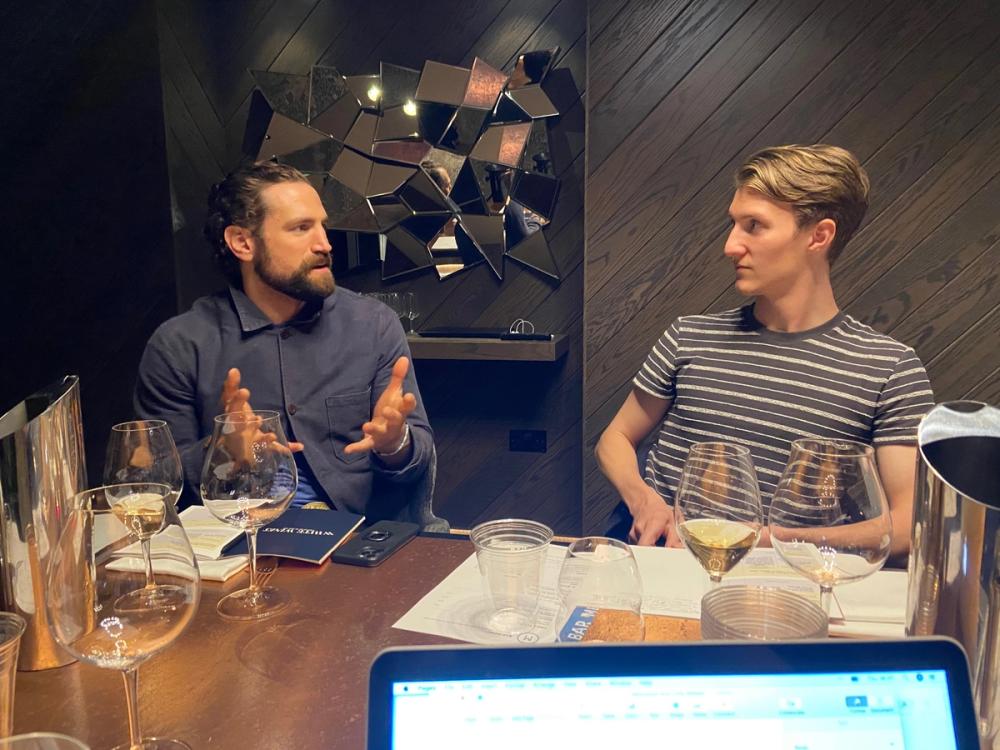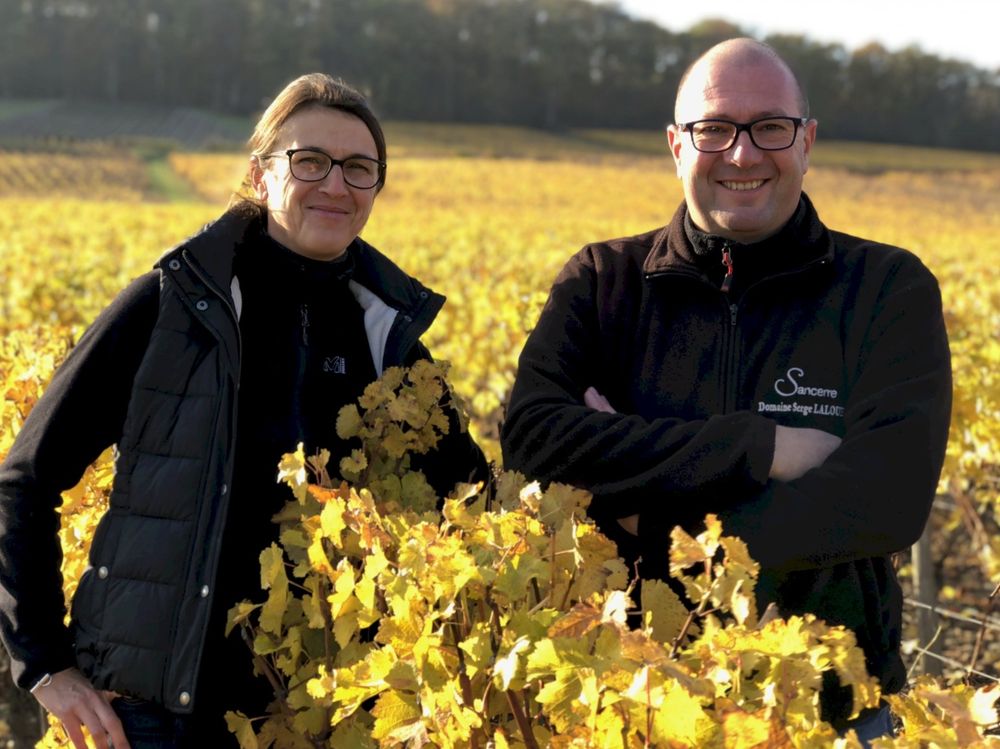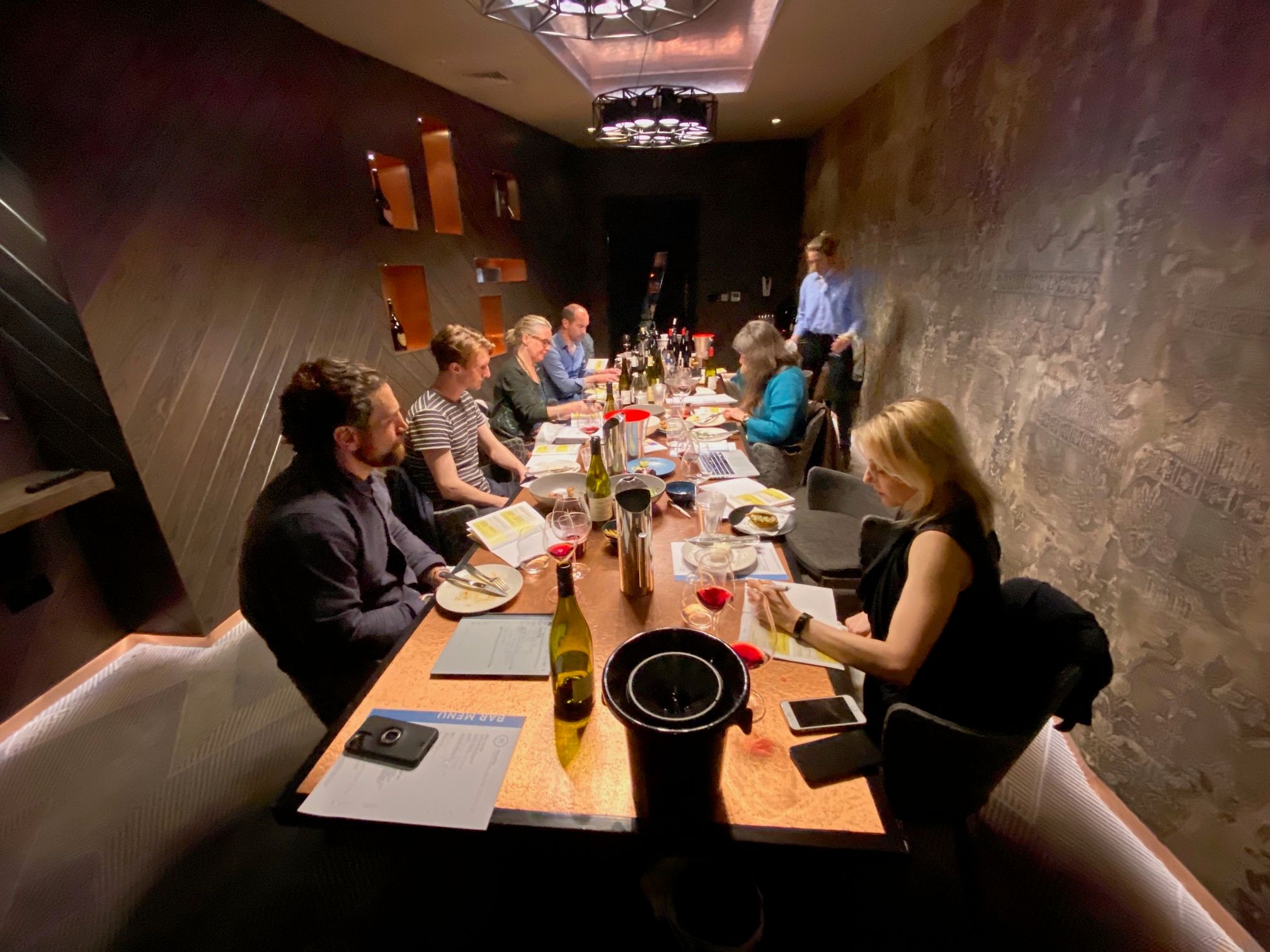You can read how impressed our panel of wine buyers were with the quality and diversity of Beaujolais white wines here. But what did they think of a range of red wines from the Centre-Loire?
Thanks again to our panel for taking part which included: Elliot Awin, partner, ABS Wine Agencies; Joshua Castle, head sommelier, Noble Rot; Ray O’Connor, wine director, Naked Wines; Victoria Sharples, wine consultant who is shortly opening her own wine bar in Hampstead Heath; Joelle Nebbe-Mornod, owner of Alpine Wines; and Rebecca Palmer, head of commercial wine buying at Corney & Barrow.
It’s always dangerous to generalise, but, in the main, if you ask a panel of leading UK wine buyers to give an overall assessment of a wine region – be it a traditional or emerging one – a particular vintage, or a style of wine, then often they will be looking for hooks and pointers on which they can base their tasting notes and findings. Which was very much the case with our panel’s views on the Centre-Loire and their rather over looked red wines.
In fact for some there was more consistency to the Centre-Loire selection than they had seen in the Beaujolais whites. Elliot Awin at ABS Wine Agencies felt he could see a “common thread between them all” which you can add “commentary and a hook too”. He likened it to browsing in a library under a certain theme and then finding the style of book that is right for you. “The Loire reds that did that better for me than the Beaujolais wines. You could see that bright fruit on all their noses and there was a common theme there.”
Joshua Castle at Noble Rot said he also really appreciated what he saw as the “consistent theme” that runs throughout the wines where there is so much to enjoy in the “red and small berry fruits”.

Elliot Awin at ABS Wine Agencies makes his point to Joshua Castle from Noble Rot
Rebecca Palmer at Corney & Barrow, however, did not feel it is so important to “pigeon hole” the wines too much in that it is good to taste a wider range that are not quite on the “bulls eye” of what you might expect from the Loire. It’s also not surprising, she added, considering how little Pinot Noir and Gamay is currently planted in the region, that there should be more idiosyncratic styles. “It’s great not to find uniformity,” said Palmer.
Overall the panel was excited about the potential that Centre-Loire reds have as a growing category and that there is so much potential across a variety of price points. They liked the strong use of Gamay and how well it performs, often providing the structure, the backbone to wines that will also help with climate change. The blends it then creates with Pinot Noir, be it the dominant or minority partner, means there is such a diverse choice of Loire reds to choose from.
For Victoria Sharples it is all about the “freshness” you see in the wines, even at high alcohol levels that make them constantly drinkable and highly approachable.
Jump in quality
Ray O’Connor at Naked Wines said it has been noticeable the improvement in quality that he has seen in recent years and that steps being taken both in the vineyards, particularly around canopy management, and the winery are paying off. “So when it is good, it is really good,” he said.
Sharples said of the wines tasted she was surprised to find much more inky, blackcurrant notes than she was expecting which shows the region is capable of producing a wider range of Pinot Noir styles than she might have appreciated.
O’Connor said he was encouraged to taste such a diverse range of wines and also see the number of different importers that are bringing them into the UK, based on their needs and customers. Which again also goes back to the size of the appellation and different terroirs from where the wines are being made.
Sharples felt you could group the wines together under a broad umbrella of “lighter reds” where there is some typicity that is unquestionably French.
Joelle Nebbe-Mornod at Alpine Wines said that might also be because the wines have already gone through a “common thread filter” to make them suitable for the UK market – and a panel such as this – as there are a lot more wines in different styles available in the Loire. The same goes for Beaujolais too, she added.
Castle agreed that the “overall raw material” of fruit “was pretty high quality, refreshing, tarte red fruit, lots of juicy tannins” . “Structurally they are all similar.”
Palmer’s final thought was the impact of climate change and how the reds will be able to handle the higher alcohol levels and increasingly drier vintages.
The Wines
Châteaumeillant, Domaine Rouze, Les Grappes, 2019

Pinot Noir 20%, Gamay 80%
13.5%, €7.80 ex cellar
25 year-old vines grown on a soil composed with silica and quartz.
Imported by Fingal Rock – Tom Innes
Ray O’Connor said he was a big fan of Gamay wines and this wine did not disappoint. He particularly liked the “slightly herbaceous” notes in the wine and that it was “refreshing but not over the top” and the “kind of wine you would find in a French wine bar” or “Italian pizzeria”. “It’s full of joy and got that typicitiy of the Loire.” Awin agreed: “It’s fun and easy going and not too serious and does not over promise.”
Victoria Sharples said that for a “light, easy drinking red” this ticks a lot of boxes. “It’s got pretty fruit, it’s fresh, juicy and clean. It’s quite a compelling drink for an every day drinking red.”
Joelle Nebbe-Mornod said that this was exactly the kind of “dangerously easy drinking” wine she grew up with in Switzerland, where it is quite common to also have blends of Pinot Noir and Gamay and “you drink them for different times”.
Coteaux du Giennois, Emile Balland, Les Beaux-Jours 2019

Pinot Noir 70%, Gamay 30%
13%, €11.60 ex cellar
Planted in 2000 on a clay & silica soils, and limestone subsoil.
Imported by Vindependents
Elliot Awin felt this wine “was far more stereotypical of what he was expecting” from a Loire red and had the freshness he was anticipating to see. “It’s a much brighter wine,” he said. “It’s like a wolf in sheep’s clothing.”
Sharples likened it more to a Sancerre and agreed with Awin that stylistically it is more what you would expect from the Loire and would actually prefer to see it chilled down a little to bring out more of the wine.
You are certainly getting more for your money with this wine, said Nebbe-Mornod, which is reflected in its price point.
Menetou-Salon, Domaine Teiller, Cuvée Tradition, 2019

14.5%
100% Pinot Noir
5 hectares hillside parcel, on clay and limestone deep soil.
Imported by Yapp Brothers
This wine received universal approval as the panel enjoyed this “super seductive” and “super fine” style of 100% Pinot Noir.Even with the high alcohol score the panel found enough acidity and balance to offset it. “This is a really good style of wine,” said Sharples. “I like it a lot,” agreed Palmer.
Castle commented on its “neatly knitted tannins” whilst O’Connor simply said: “It’s beautiful. Generous with so much mouth feel.”
Sancerre, Pascal et Nicolas Reverdy, Hommage à Nicolas, 2019

14.5%, €19 ex cellar
100% Pinot Noir
Single parcel located between Sancerre and Bué on fine limestone soils. 20 years-old Pinot Noir vines.
Imported by Haynes Hanson & Clark and H2Vin.
A big wine that again got a thumbs up from most of the panel. “It’s a whopping wine for a Sancerre,” said Sharples, kicking off the debate on this wine.“I really like it,” said Awin. “It’s stunning,” said O’Connor.” Again the “acidity is there” to help balance the high alcohol percentage, said Nebbe-Mornod.
But interestingly the panel did not necessarily see this as a typical Loire red. “I am not even sure I could say this was a Pinot Noir,” said Sharples. Palmer agreed and said it would be a hard wine to place if you were sitting a WSET exam. “Is this the future of climate change in the Loire Valley?” she asked. “It’s all balanced, but just very different to what we think of a Sancerre rouge.”
Reuilly, Domaine Jamain, Les Fossiles 2020

13%, €13.50
100% Pinot Noir
4 hectares parcel on the “pierres plates” hillside, clay and limestone soil. Certified organic and biodynamic.
Imported by FMV, Berry Bros & Rudd, The Wine Society
This is more of the typical Loire red that O’Connor was expecting to taste and more in keeping with what he was used to tasting over the last few years. It’s not necessarily his own personal style but can certainly see why such respected importers are bringing it into the UK.
Awin agreed that this was more “classic” Loire red. “It’s true to type,” but also felt it was perhaps over promising in terms of its price point to what was being delivered.
Côtes de la Charité, Domaine Serge Laloue, 2020

14.5%, €9 ex cellar
100% Pinot Noir
21-years Pinot Noir grown on 1,5 hectares of clay and limestone soil. In conversion to organic farming
Imported by Hallgarten Wines and The Wine Society
This again was very much a typical Loire red that you would expect to be served if you came across it on a wine list, said Awin. “This is the image I have of a Loire red. It’s fresh and got racing acidity.”
“It’s lovely,” agreed O’Connor. “It feels like it has had some carbonic maceration character to it. It’s happy and bright.”
Menetou-Salon Rouge, Domaine Joseph Mellot, Les Thureaux 2019
13.5%, €10 ex cellar

100% Pinot Noir
15 years-old Pinot Noir vines grown on 5 hectares of Kimmeridgian limestone marls. Weeding and tillage mechanically carried out.
Imported by Hatch Mansfield
The tasting ended on a high note with again strong praise for a wine that delivers, but again introduces a different style of Loire red. Sharples picked up on its blackcurrant undertones, whilst Palmer felt it had much more of the “rustic” charm you expect with Loire reds.
- You can read part one of our buyers panel report here assessing the strengths and challenges for both Beaujolais and the Centre-Loire and a particular focus on Beaujolais white wines.










































